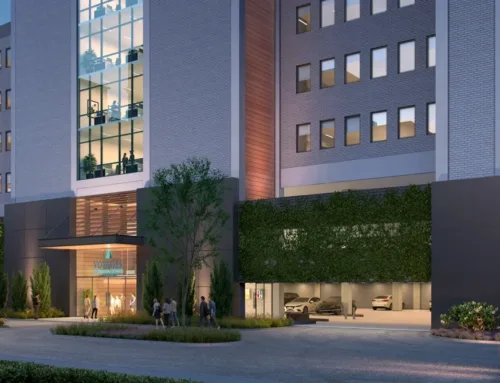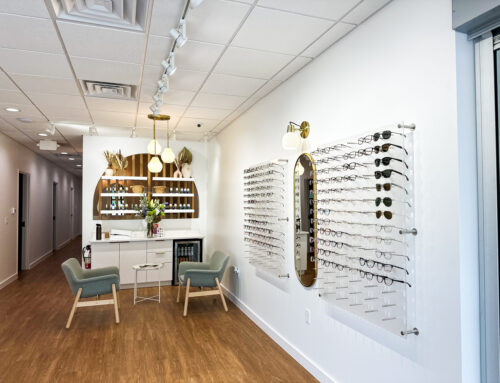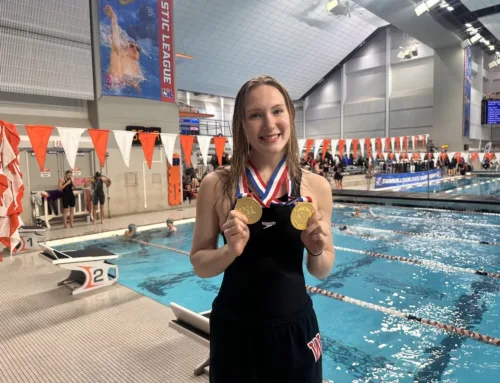And one neighborhood resident and DISD employee is doing everything he can to make sure no other district school winds up like this
East Dallas is known for being a staunch supporter of its public schools. In a city where families with means often opt out of the school district, many affluent neighborhood families choose public.
As a result, our neighborhood has some of the most socioeconomically integrated schools in Dallas ISD. Woodrow Wilson High School was the first school in Dallas to racially integrate in the ’60s, even before DISD’s court-ordered desegregation, and it remains diverse to this day.
Over the last decade, several neighborhood schools have successfully attracted more middle- and upper-class families, often as a core group of parents tests the waters and then beckons others to jump in. Even with these recruiting efforts, however, some parents find it hard to get excited about their options, or lack thereof.
That’s how Dallas winds up with a school like Dan D. Rogers Elementary, which is situated in a wealthy area of the city and even has a cutting edge “personalized learning” curriculum, but more than 80 percent of its students come from families who make less than $44,123 a year — the line between affluence and poverty, according to the state of Texas.
Perhaps this actually benefits Dallas ISD. Homeowner families pay property taxes to the district on top of the tens of thousands they shell out for private school, so it’s a win-win, right? Rich families can send their children to whatever school they deem best, and the school district can still educate poor kids on these families’ dime.
But if that’s the case, why is DISD spending so much time and effort creating more educational options for parents who are opting out?
The key lies in a seven-minute YouTube video that appeared on Dallas ISD’s website last fall, somewhat hidden in a drop-down menu on the Public School Choice page and watched by relatively few. “The Case for Socioeconomic Diversity” was created by the district’s Office of Transformation and Innovation (a fancy description of choice schools). It argued that the merits of socioeconomic diversity are “almost entirely overlooked, despite decades of strong evidence that it’s one of the most powerful strategies available to us to improve student achievement.”
In other words, if we mix rich kids and poor kids in schools and classrooms, the poor kids perform better, studies show, and rich kids fare just as well, studies also show. Both groups also enrich their educational experience by attending school with each other.
The man at the helm of the choice school movement is Mike Koprowski, a Vickery Place resident and father of three hired by former Supt. Mike Miles two years ago. Koprowski didn’t need his Harvard graduate school degree to realize “we have a very economically segregated school district. No matter what map you look at, it tells the same story.”
Much of the segregation in our schools can be attributed to our segregated neighborhoods. When the Pew Research Center analyzed the concentration of low- and upper-income residences in the nation’s metro areas, Dallas ranked near the top in both categories. The Urban Institute also named Dallas the worst offender in terms of neighborhood inequality.
In other words, in Dallas the rich are much more likely to live among the rich and the poor among the poor.
But as Koprowski’s data shows, our school district is even more segregated than our city. Despite the high median incomes in pockets of East Dallas, only two neighborhood schools can be labeled “socioeconomically diverse,” meaning their student body make-up is right around 50/50 rich and poor. One of those is Woodrow; the other is Hexter Elementary, another diversity success story that earned a coveted Blue Ribbon distinction as middle-class families began filtering back into the school.
Our neighborhood also has two of the district’s five predominantly affluent schools. Stonewall Jackson Elementary is 76 percent affluent, and Lakewood Elementary is 96 percent, making it the wealthiest and least-diverse school in the district and the only Dallas ISD school with more than 80 percent affluent families.
Other schools are inching toward diversity — J.L. Long Middle School, Mata Montessori, and Sanger and Robert E. Lee elementaries all have campuses hovering around 40/60 rich and poor.
In the rest of our neighborhood schools, however, and across most of the district, more than 80 percent of students live below the $44,123 poverty line.
“We’re silo-ed off,” Koprowski says. “Those who have means have largely opted out of the district, and those without means are largely in the district.”
To learn how this happened, he leaned on Dallas Observer columnist Jim Schutze’s 1987 book “The Accommodation,” which tells the story of Dallas ISD’s desegregation in the ’70s. Around the same time, he read “All Together Now” by Richard Kahlenberg, which focuses on bringing together kids from diverse socioeconomic backgrounds.
“I thought, ‘This can be a core component of school choice,’ ” Koprowski says. It hasn’t been featured prominently in the effort, but “I kept it in the back of my mind,” he says.
Integration is a more succinct description of what Koprowski is trying to accomplish, but there’s a reason he’s not using that term.
“There’s nothing magical about putting a white kid next to a black kid,” Koprowski says. “The socioeconomic piece is really the powerful component.”
He’s not enough of an idealist, however, to think that altruism alone will “bring back an entire socioeconomic group.” The genius of choice schools is that although they are designed to impact the most at-risk Dallas ISD students, they also appeal to the segment of families drawn to private schools.
International Baccalaureate (IB). Montessori. Bilingual. Personalized learning (which has been described as “high-tech Montessori”). All of these in-demand curriculum approaches are now available to Dallas ISD families — sans the magnet-like academic entry requirements — and the needle is beginning to move.
Kristy Ladner and her husband moved to a house in Ridgewood Park two blocks from Dan D. Rogers Elementary a decade ago and were “definitely the youngest by about 20 years,” she says. Over time more young couples moved into the neighborhood, but as they had children, they moved away. The Ladners, too, assumed that when it came time for kids, they would either move or choose private school. This was “based on no research — just the perception of DISD,” she says.
After the birth of their now 3-year-old son, they would drive past the school and think, “It’s such a shame we can’t go there.” Slowly, that turned into, “Really, how bad could it be for kindergarten?” And then the Ladners attended a Rogers open house that showcased the personalized learning curriculum.
“I just fell in love with [Principal Lisa] Lovato and the passion of her whole team talking about that concept and thought, ‘OK, this is something worth paying attention to,’ ” Ladner says. Her interest evolved until “somehow, I became the founder of the Rogers Early Childhood PTA.”
Four families showed up for the first playgroup at Ridgewood Park last fall, and three attended when Lovato opened the school library to families on a recent Saturday. Right now, Ladner doesn’t know of any homeowners from Ridgewood Park, University Meadows, Fisher Heights or Northill who send their children to Rogers.
But in fall 2018, when her son is ready for kindergarten, her family will begin reversing that trend.
“I’m absolutely looking at it for the greater good of the neighborhood, but I’m also selfishly looking at it for me,” she says. “Then we can get that experience to tell other parents this is great, other than just sounds great in theory.”
One of the main reasons integrated schools are effective is the middle- and upper-class parents who have more time to volunteer and pull in community resources, and the know-how to advocate for their campuses, while low-income parents often are “working the third job to pay for gas to the second job,” Koprowski says.
There’s also the “peer effect,” as he calls it. For example, low-income children come to school with about half of the vocabulary of their of peers, and much of that vocabulary is shared in informal settings, such as cafeterias and playgrounds. Data also shows that the most experienced, effective teachers are drawn to more socioeconomically diverse schools, he says.
All of this adds up to low-income students in mixed-income schools being able to perform two grades ahead of those in impoverished schools, Koprowski says.
And for parents worried about the reverse effect, Koprowski insists it’s an urban myth.
“Look at the research — that’s not what happens,” Koprowski says. “Middle-class kids do just fine academically. They have the ultimate wraparound service, which is affluent parents.”
And on the flip side, he says, “If you’re going to prepare your kid to succeed in a diverse society, think of all the social and moral things you gain by opting into the public enterprise.”
If integration happens, it will happen school by school. The outlook is bleaker on the district level — even if all of Dallas’ middle- and upper-class families re-enter public schools, the district’s socioeconomic stats wouldn’t be 50/50.
And that’s “perfectly fine,” Koprowski says, because diversity is not the “be-all end-all” of choice schools or even academic success.
“This city has a painful history with race and class relations,” Koprowski says. “These problems didn’t happen overnight; they’re not going to get solved overnight with my choice initiative.”
He sees signs of hope, however. More than 60 years after Brown v. Board of Education and 45 years after Dallas’ own court-ordered desegregation, Dallasites may be starting to naturally integrate.
“It’s all voluntary. This isn’t the days of desegregation where it was forced busing,” Koprowski says. “Parents are opting in.”
Read these related Advocate stories:
“The advantage of being disadvantaged”
“Worship: The case for integration,”
“Integration: Everybody’s doing it — but will it work in Dallas?”





